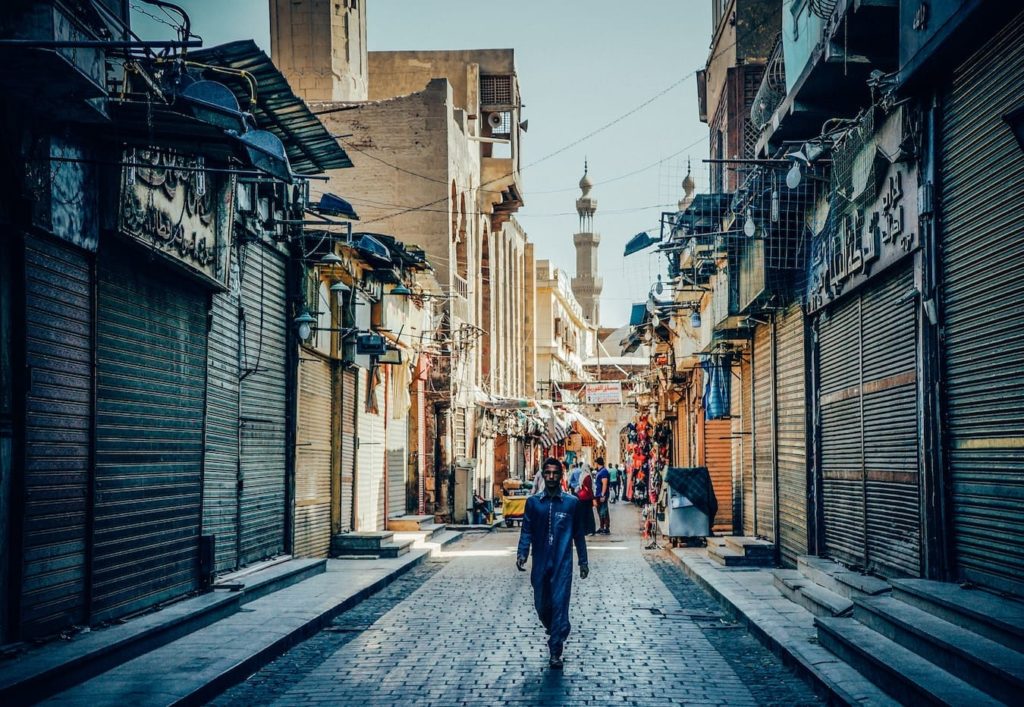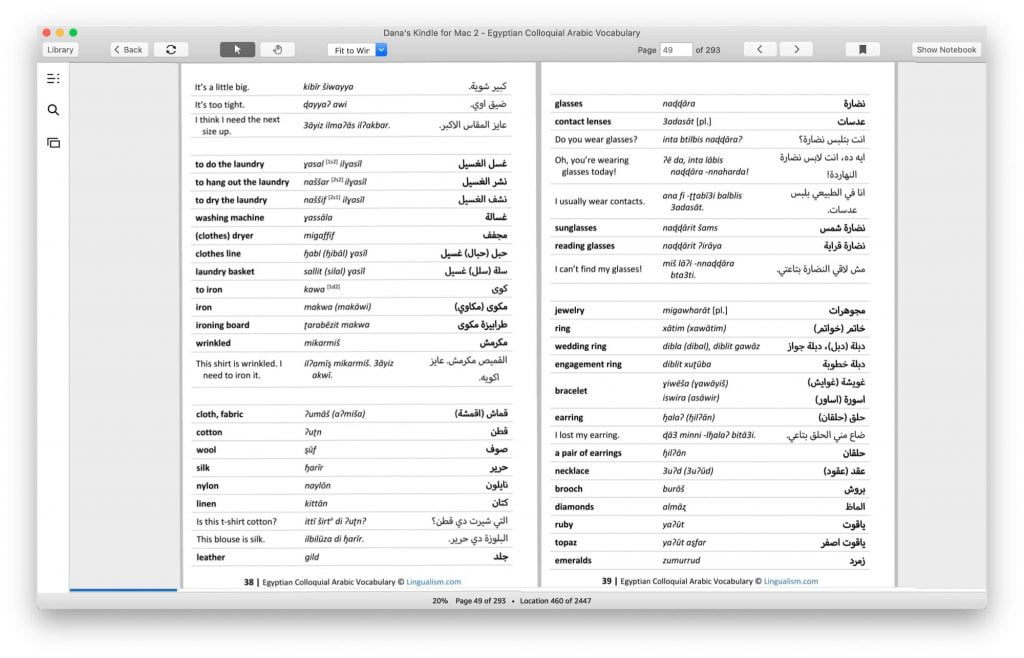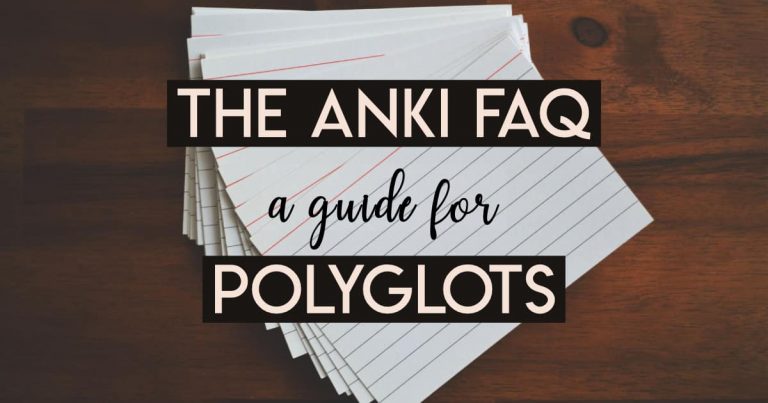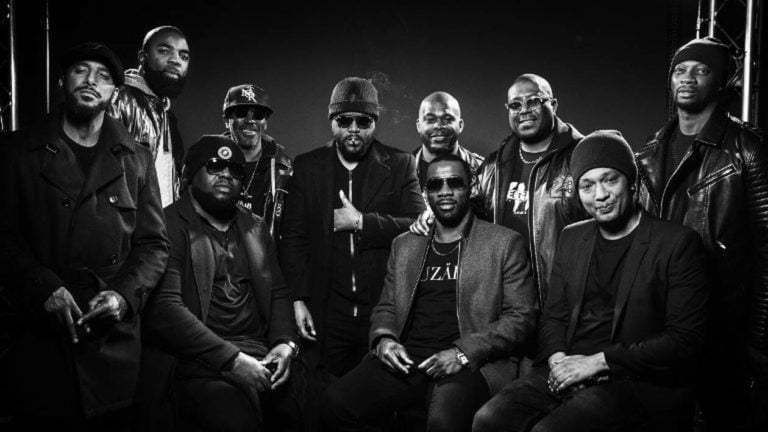Egyptian Arabic FAQ — Ten Interesting Facts and Figures
Are you thinking of learning Egyptian Arabic and want to learn about the language before diving in?
Do you know some other related languages (like Levantine Arabic, or Modern Standard Arabic), and want to know more about how they compare with Egyptian Arabic?
Or are you just interested in the spoken language of Egypt?
Well, I’m compiling this list of facts, figures, and resources as a one-stop shop to everything about the language of Egypt.

Contents
General background to Egyptian Arabic
Egyptian Arabic is a mostly spoken dialect of Arabic mostly spoken in — surprise — Egypt!
It’s not just spoken in Egypt — it’s also spoken in surrounding countries by smaller populations.
On top of that, Egypt itself has multiple languages and dialects. Egyptian Arabic isn’t the only language spoken, and it has distinct pronunciation depending on region.

So how many people speak Egyptian Arabic? Answer first — Egyptian Arabic is spoken by around 100M speakers in Egypt and its immediate surrounds, making it one of the nine most-spoken languages in Africa.
But it’s actually a little hard to say exactly how many people speak it, because
- It’s on a bit of a dialectic continuum. The accent and pronunciation varies even within Egypt.
- People tend to understand Egyptian Arabic in places where they might not speak it as a primary language, even though they can speak it.
- Because of Egypt’s media influence (read: very popular singers and telenovela-style dramas), many, many Arabic speakers around the Arabic-speaking world understand Egyptian Arabic and can even kind of “fake” their way speaking through it. (It sounds a bit awkward, like a British person trying to fake an American accent, but honestly, it really helps me understand what they’re saying.)
Is Egyptian Arabic a Language, a Dialect, or an Accent?
The answer to whether Egyptian Arabic is a language, an accent, or a dialect depends on who is answering the question and what language they’re speaking.
The official language of Egypt (and of many countries in the Middle East such as Lebanon, Iraq, Saudi Arabia and so on) is simply “Arabic”. By this, they mean “Modern Standard Arabic”, otherwise known as MSA.
Officially, in Egypt, Egyptian Arabic isn’t a “language”. People speaking Arabic call it “3aamiyyah” (عاميية), and will say that that’s what you should learn. This word loosely translates to “slang”.
When talking about Egyptian Arabic to Arabic teachers, sometimes they call it an “accent’, using the word “lahgah” (لهجة), which also translates to “dialect”.
In practise, spoken Egyptian Arabic is different to MSA in a few key ways (see the section on Egyptian Arabic vs MSA. Its grammar is simplified, it’s pronounced slightly differently, and many common words are different.
When I talk with an Egyptian (or actually anyone from the Middle East) about how good their “Arabic” is, I find they generally say something apologetic like “Oh, my Arabic isn’t so good…”. This happens whether they’re speaking English or Arabic. They’re talking about MSA, and what they mean is that they can’t express themselves in MSA like a newsreader can.
From a language learner’s perspective, I’d consider Egyptian Arabic to be somewhere between “dialect” and “language”.
This is a reductionist answer, and let me give a bit of detail:
- If you’re learning Egyptian Arabic, then you need specific resources. I mean textbooks, teachers, and websites specific to Egyptian Arabic. If you use other resources, you’ll often learn a word or phrase that nobody uses. (Luckily there are many resources and speakers.)
- If you meet someone who speaks a different variant of Arabic (like Levantine or Moroccan), they’ll immediately identify you as someone speaking Egyptian Arabic from words you use and the way you pronounce them. Simple everyday words like “coffee” and “hello” are totally distinct.
- There’s no formal way to write Egyptian Arabic. People do write it (e.g. in chats, on Facebook and so on), but the way in which they can do it is not set in stone and you can’t really be called out on “spelling” (unless you’re writing an MSA word). See our article on Egyptian Arabic in the wild.
Many people who learn Arabic and who write about language learning encourage people to learn a dialect and to learn Egyptian Arabic as that dialect.
Egyptian Arabic Translators and Dictionary
To translate English to Egyptian Arabic, there is no good translator online. Google Translate and other similar translators translate to Modern Standard Arabic. If you want a translation, then your best bet is either a) asking nicely on Reddit’s r/learn_arabic or in a Facebook group, or b) getting a professional translator.
To translate Egyptian Arabic to English, you can use Google Translate. It’s effective at understanding Egyptian Arabic (and other Arabic dialects).
See our guide to Arabic dialects spoken
The best dictionary for Egyptian Arabic is definitely Lisaan Masry. Lisaan Masry is a non-profit app built by Arabic learners for other Arabic learners.

It has an OK app (it’s fast and effective, but not aesthetically pleasing), and a decent website with examples and lots of categorisation and linking.
How to Learn Egyptian Arabic
See our guide to learning Egyptian Arabic for more detail.
But here’s what we recommend in a nutshell.
- Learn “About” Arabic. Read this page! You might also want to learn some interesting Arabic facts. But also learn about the dialects of Arabic and how they differ from Modern Standard Arabic by reading our full guide to Arabic dialects.
- Learn the Arabic alphabet. Even if you’re learning a dialect like Egyptian, you’re going to need to be able to read and write basic words. And when you go to read a menu in Arabic you don’t want to be stuck hungry.
- Learn Egyptian Arabic pronunciation and basic phrases. You can start with the phrases on this page, but you might also want to try Glossika, which is how we each learned around 1,000 Arabic phrases.
- Learn Egyptian Arabic grammar. The grammar system isn’t that hard. Luckily, it’s a simplified version of Modern Standard Arabic grammar. Check the grammar section below for an overview.
- Get a teacher. At this point, you should start talking to teachers. We got all our teachers online on italki, and we’d recommend the same. Use our coupon below and you’ll get enough credits for 1-2 classes.
Get $5 in italki credits — enough for a trial class!
Get a tutor online for as little as $4/lesson from italki with $5 in credits after your first purchase of $20 of credits.
Key Phrases in Egyptian Arabic
Here are some key phrases in Egyptian Arabic.
To keep this simple, we’ve included only one way of saying the below phrases. But many of the phrases have many ways of saying them.
For more detail and discussion, see our full guide to phrases for speaking Egyptian Arabic like a local.
| English | عربي | Arabic (pronounced) |
|---|---|---|
| OK | ماشي | maashi Tayyib |
| Yes | أيوا | aywa |
| No | لا | la’ |
| Hello | أهلاً | ahlan |
| Excuse me (to get attention) | ba3d iznak (to man) ba3d iznik (to woman) | |
| How are you? | أزّيك؟ | izayyak? (to male) izayyik? (to female) |
| Nice to meet you (Response) | فرصة سعيدة أنا الأسعد | furSa sa3iidah ana as3ad |
| Welcome | ahlan wa sahlan | |
| Please, come in/sit down (a general politeness word) | tafaDDal (to a man) tafaDDali (to a woman) | |
| Good morning | SubaaH al-kheir | |
| Good evening (greeting) | masaa al-kheir | |
| Good night (sleep well) | تصبح على خير | tiSbaH 3ala kheir |
| Goodbye | ma3 as-salameh | |
| Please | من فضلك | min faDlak (to male) min faDlik (to female) |
| Thank you | شكرا | shokran |
| You’re welcome | عفوا | 3afwan |
| Happy birthday | كل سنة وانت طيب | kull sana w’inta Tayyib (to male) kull sana w’inti Tayyib (to female) |
| I love you* | بحبك | baHibbak (to male) baHibbik (to female) |
| I miss you** | وحشتني وحشتيني | waHashtini (to male) wahashtiini (to female) |
* Use this sparingly!
** This is really “You are missing to me”, similar to how the French use the verb manquer.
Egyptian Arabic Grammar — A Quick Overview
Egyptian Arabic grammar is a simplified version of Modern Standard Arabic grammar.
Here are the key features of Egyptian Arabic grammar that you should know.
- Etymology (what words are made of): In Arabic, every word is based on a three-letter root of a general concept. Other words are built out of that root using different structures and fillers, but never changing the order of the root. For example the root for “love” is H-b-b (a double “b). From this, Hubb means “love” as a noun, maHboub means “beloved”, Habiib is a common name, and baHibbu means “I love it/him”.
- Verb conjugation: Egyptian Arabic verbs are conjugated by person (first, second, third), plurality (singular/plural), and gender in some cases (not first person, but yes second or third, and continuous). The present continuous is popular in spoken Arabic, and is used as an adjective, a bit like “I’m wanting to do this”.
- Pronouns: Subject pronouns are used when you use the continuous tense in Arabic (e.g. ana 3ayiiz aakul Haagah, “3ayiiz” is the present continuous for “to want”). They’re less frequently used in standard conjugations as the subject is implied by the conjugation (e.g. you don’t need to say ana baHibbak; baHibbak is enough), other than for emphasis or clarity.
- Grammatical gender: Arabic has two genders. When conjugating verbs, you use gender for second and third person (you, and he/she), including plurals. Plurals are often treated as female, and nouns can be masculine or feminine.
- Plurals: Egyptian Arabic plurals change shape depending on the word’s form. It looks unintuitive until you have learned a bunch and start to observe patterns, and start being able to guess. E.g. the plural of film is aflaam, the plural of Taba’ (plate) is Tubaa’, and the plural of makaan (place) is amaakin.
- Cases — Modern standard Arabic has case endings on words, which means they have different endings depending on their position in a sentence (subject, object etc.) and gender. Apart from very few colloquial exceptions, Egyptian Arabic doesn’t have this.
In general, I wouldn’t say Egyptian Arabic grammar is any harder than French or Spanish, if they’re languages you’ve studied before.
Some unique features of spoken Egyptian Arabic grammar are:
- Negatives are expressed twice in one word. In MSA, a negative is usually formed by using لا or ما (laa or maa). In Levantine Arabic, if you say “I don’t know”, you’d say “ma ba3raf” — the “ma” expresses the negative. in Egyptian Arabic, a “sh” sound is added to everything that also means “not”. So “I don’t know” is “ma3arafsh”, with two parts of the word meaning “not” — the “ma” and the “sh”.
- You use the continuous tense a lot as a conjugation. In Egyptian Arabic, a verb is often conjugated in the continuous tense and kind of used as an adjective. For example “Where do you live?” is said wein saakin?, i.e. “Where living?”. Levantine Arabic does this too, but less; by contrast, they like to use عم to describe the continuous tense.
- The verb ba’a (بَقى) is used in a variety of situations. It can be used in sentences describing becoming, or the past. It’s quite a complex topic — see this post from Arabic for Nerds by Gerald Drißner for more explanation.
Egyptian Arabic Vocabulary resources
If you want to learn Egyptian Arabic, the best resource I can recommend is the dictionary mentioned above.
I like to use the dictionary in the normal way of looking up words (as you’d do with any dictionary) as well as to browse a category of words to learn other related words.
My second favourite source for Egyptian Arabic vocabulary is the resource book by Matthew Aldrich of Lingualism. You can find a comparison of several books we recommend on our page of Egyptian Arabic textbooks.

Finally, we really like to use Glossika to teach us words in context. We also really like Speechling (see our comparison), but they don’t have Arabic yet.
Glossika teaches you whole sentences. You hear the same word in different sentences — sometimes in slightly different forms — and after a while, you realise that you’ve learned the word.
Try Glossika for a Week for Free
Try Glossika’s method of teaching language through thousands of sample sentences. Learn languages by sentences spoken by native speakers in over 60 languages.
Egyptian Arabic Alphabet, Phonology and Pronunciation
Egyptian Arabic uses the Arabic alphabet of 28 letters. See our article on Arabic Facts for information about how Modern Standard Arabic is written and pronounced. But in summary:
- The majority of Egyptian Arabic letters are pronounced the same as Arabic — except for the following exceptions.
- The letter jiim, “ج”, is pronounced with a “g” instead of a “j”. This means that the word for beautiful, جميل, is pronounced “gameel” instead of “jameel”.
- The letter qaff, “ق”, is pronounced the same as a glottal stop. This is how the Lebanese (and others in the Levant) pronounce it too.
- “ث” is t
- “ذ” is z
Generally, Egyptian Arabic sounds soft and gentle. Levantine Arabic sounds this way, too. It’s a stark contrast to how people expect Arabic to sound, full of “kh” and throaty sounds…
Egyptian Arabic vs Eastern Arabic/Levantine Arabic
People frequently compare Egyptian Arabic and Levantine Arabic.
Most people choose to learn one because of some connection with one. E.g. you might be living in Beirut or in Cairo, or have friends from one region, or have a large population of people from one region in your city.
Either way, both dialects of Arabic are similar in difficulty and have similar relationships to MSA.
The main difference from a learner’s perspective is that there are more resources available for Egyptian Arabic learners.
Here is a summary table of the similarities and differences. Look at the common phrases — some everyday things can be very, very different! (But most things are the same)
| Language/Dialect | Egyptian Arabic | Levantine Arabic (a.k.a. Eastern Arabic) |
|---|---|---|
| Region spoken | Egypt + surrounds | Lebanon, Syria, Israel/Palestine, Jordan |
| Number of speakers | ~100M | ~35M |
| Common phrases 1. Hi 2. How are you? 3. What do you want? 4. Where are you going? 5. What’s this? | 1. ahlan 2. izzayak? 3. inta 3ayiz eh? 4. btruuH fein? 5. eh dah? | 1. ahlan/marHaba 2. keif Haalak? 3. shu biddak? 4. wain raayiH? 5. shu haada? |
| How well-understood elsewhere | Very | Quite well |
| Pronounces as… 1. ج 2. ق 3. ذ 4. ث 5. ة | 1. “g” 2. glottal stop 3. “z” 4. “t” 5. “a” | 1. “j” 2. glottal stop 3. “z” 4. “t” 5. “i” |
| Resources available | More (both online and offline) | Less (both online and offline) |
Egyptian Arabic vs Modern Standard Arabic (MSA)
Many people interested in Egyptian Arabic want to know how it’s different to MSA.
Firstly, if you’re learning to speak, we’d always recommend learning Egyptian Arabic. You can speak Modern Standard Arabic, and people will generally understand you if you speak it well and slowly. But it can also sound snooty and not natural. I’d say speaking MSA colloquially i a bit like speaking the Queen’s English in an American sports bar. “Oh hello my good chap! Have you a pint of ale perchance?”
On the other hand, if you speak MSA, you’ll sound wonderfully and appropriately educated in business meetings, lectures, and so on. It will be a huge advantage there. But it’s a lot harder.
Here’s a comparison table comparing Egyptian Arabic and MSA:
| Language/Dialect | Egyptian Arabic | Modern Standard Arbic |
|---|---|---|
| Region spoken | Egypt + surrounds | Everywhere in the Arab world |
| Number of speakers | ~100M | ~400M understand ~100M speak |
| Common phrases 1. Hi 2. How are you? 3. What do you want? 4. Where are you going? 5. What’s this? | 1. ahlan 2. izzayak? 3. inta 3ayiz eh? 4. btruuH fein? 5. eh dah? | 1. marHaban 2. kayfa Haalak? 3. maadha toriidu? 4. ila ayna tadh-habu? 5. maa haadha? |
| How well-understood elsewhere | Very | Very |
| Pronounces as… 1. ج 2. ق 3. ذ 4. ث 5. ة | 1. “g” 2. glottal stop 3. “z” 4. “t” 5. “a” | 1. “j” 2. q (back of throat) 3. “dh” 4. “th” 5. “a” |
| Resources available | Some | A lot/many/heaps |
If you’ rethinking of learning Modern Standard Arabic, check out our page on the topic. We include a discussion of why you might want to learn MSA.






